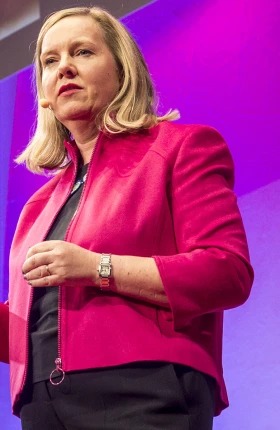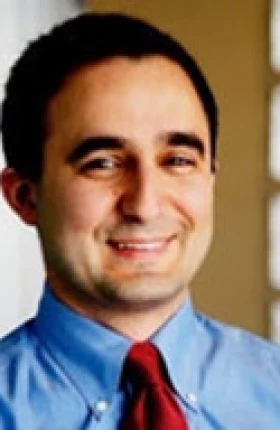A well-known brand and a unique business model are terrible things to waste. Companies devote blood, sweat, and tears—and lots of money—to protecting their brand, which acts as a proxy for their image and reputation, and their business model, which can be a key source of competitive advantage.
Once organizations create a strong brand and business model, the last thing they want to do is give them away. Yet that is exactly what TED , the nonprofit conferencing and online video organization, has done.
TED was aiming to expand the organization’s reach and broaden its mission of “ideas worth spreading” globally but was constrained by the small size of its largely US-based team. In response to this challenge, the organization created TEDx, a collection of independently organized regional events over which it has limited control. Local TEDx events range in size from a 10,000-participant conference in Buenos Aires to small grassroots gatherings in the slums of Nairobi.
TED’s bottom-up approach to expansion sounds radically irresponsible, but it actually has application for other organizations that want to unleash the power of the crowd and create a favorable climate for innovation.
TED has spread great, relevant ideas primarily through videos of its short, highly curated TED Talks, which have been viewed more than 2 billion times. The 20 most popular talks include a brain researcher who brought a human brain on stage to describe her own stroke and a supermodel talking about the power and construction of imagery. The New York Times says TED videos are the “antipode of the viral videos of laughing cats and dancing babies that entertain millions of bored office workers each day.”
In 2009, in the service of spreading these antipodal ideas, the organization took the unconventional approach of allowing just about anybody to create his or her own version of a TED event, modeled on the same format and principles. These TEDx events are organized locally by volunteers who have no affiliation with TED other than as a licensor of the brand.
Organizers must agree to TEDx rules and guidelines—events must be multidisciplinary, named after a location, limited to a day in length, free of commercial messages or an inflammatory political or religious agenda, and so on—but they choose the speakers, venues, and topics without TED’s input. And, by the way, the licenses are free to individual organizers.
TEDx, of course, was not the organization’s first departure from convention. Radical openness has long been at the heart of TED’s strategic decision making. In 2006, TED decided essentially to give away online the videos of presentations at its highly selective conferences, which 1,000 to 2,000 attendees pay handsomely to attend. With the creation of TEDx, the organization was counting on the good intentions of strangers to do the right thing with TED’s name and format—and on the goodwill it has created by sharing its content online.
If a brand serves as a sort of visual and thematic shorthand for an organization’s intrinsic qualities, TED’s online distribution of videos and its creation of TEDx make perfect sense. What better way to spread great ideas than to empower people to pull together their own communities and spread ideas?
In that respect, TEDx has been a smashing success. The organization originally anticipated that 30 or so TEDx events would occur annually. That estimate slightly missed the mark. More than 15,000 TEDx events have been held in 168 countries. Last year alone there were 3,200. Some TEDx events draw a larger audience than TED’s annual conference.
Altogether, tens of thousands of volunteers have worked on TEDx events, and these gatherings have generated 65,000 videos, all available on YouTube. Local organizers have used the TEDx platform to improve their communities in such unexpected locations as Baghdad, Iraq. By decentralizing its brand and giving away its business model, TED has achieved a reach and scale that would not have been possible through traditional means.
TEDx owes a small debt to the open-source movement, which helped spawn Linux. The underlying software license both empowers and restricts developers, as the TEDx license does with event organizers. The difference, of course, is that a brand, once damaged, is harder to repair than a software glitch.
TED calls this open approach “designing for loss of control,” and it applies the concept broadly. Through its TED-Ed initiative, for example, teachers can take any TED Talk or educational video and create customized questions and discussions. By “allowing for chaos to exist at the edges of the system,” a TED director says, “empowerment and a lot of innovative thinking can happen.”
This approach is not as crazy as it sounds. It can help even for-profit companies become more innovative. In a world of increasing complexity and change, top-down command and control has its limits. By tapping into the power of the periphery—employees, suppliers, customers, partners, and other communities—companies can encourage bottom-up innovation, as TED has with TEDx.
To be sure, companies need to be careful about how to unleash this power. TED’s noble mission and its strong culture helped create a community that largely has done the right thing. (The organization has had difficulties with fewer than a dozen TEDx events.)
The trick is both to let go and to provide a strong framework of shared purpose and simple but very clear rules. The TEDx license is an invitation to innovate but also a restraint. The central idea is that bounded creativity is more productive than either top-down control or unfettered freedom. Put that way, the TEDx approach is common sense. Do you have the courage to move from managing through command and control to designing for loss of control?
The BCG Henderson Institute is Boston Consulting Group’s strategy think tank, dedicated to exploring and developing valuable new insights from business, technology, and science by embracing the powerful technology of ideas. The Institute engages leaders in provocative discussion and experimentation to expand the boundaries of business theory and practice and to translate innovative ideas from within and beyond business. For more ideas and inspiration from the Institute, please visit Featured Insights .








